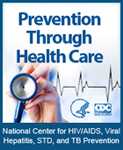Estimates of New HIV Infections in the United States, 2007-2010
High-resolution, downloadable graphics
Click on a graphic to see it in high-resolution.
Images and graphics highlighting major findings of the report are available for download. These high-resolution, public domain images are ready to print in your publication.
These images are in the public domain and are thus free of any copyright restrictions. As a matter of courtesy, we request that the content provider be credited and notified of any public or private usage of an image.
 Estimated New HIV Infections in the United States, 2010, for the Most-Affected Sub-populations
Estimated New HIV Infections in the United States, 2010, for the Most-Affected Sub-populations
View High Resolution Version
The latest CDC estimates of new HIV infections (HIV incidence) in the United States indicate that HIV remains a serious health problem, with an estimated 47,500 people becoming newly infected with the virus in the United States in 2010. HIV incidence has remained relatively stable at about 50,000 infections per year since the mid-1990s in the United States. Certain groups, including African Americans, Latinos and gay and bisexual men of all races/ethnicities, continue to be disproportionately affected by HIV.
 Estimated New HIV Infections, 2010, by Transmission Category
Estimated New HIV Infections, 2010, by Transmission Category
View High Resolution Version
Men who have sex with men (MSM) remain the group most heavily affected by HIV in the United States. CDC estimates that MSM accounted for nearly two-thirds (63 percent) of all new infections in 2010 (29,800). Heterosexuals accounted for 25 percent of estimated new HIV infections in 2010 (12,100). Injection drug users (IDUs) represented 8 percent of estimated new HIV infections in 2010 (3,900).
 Estimated New HIV Infections among MSM Aged 13-24, 2008-2010
Estimated New HIV Infections among MSM Aged 13-24, 2008-2010
View High Resolution Version
The number of new infections among the youngest MSM (aged 13-24) increased 22 percent, from 7,200 infections in 2008 to 8,800 in 2010. Young black MSM continue to bear the heaviest burden, accounting for more than half (55 percent) of new infections among young MSM (4,800) – and for more new infections than any other subgroup.
 Estimated New HIV Infections among Heterosexuals, 2010, by Gender and Race/Ethnicity
Estimated New HIV Infections among Heterosexuals, 2010, by Gender and Race/Ethnicity
View High Resolution Version
Heterosexuals accounted for 25 percent of estimated new HIV infections in 2010 (12,100). About two-thirds (66 percent) of those infected through heterosexual sex were women.
 Estimated Rate of New HIV Infections, 2010
Estimated Rate of New HIV Infections, 2010
View High Resolution Version
CDC´s new estimates show that African Americans, more than any other racial/ethnic group, continue to bear the greatest burden of HIV in the United States. The overall HIV infection rate among blacks was almost eight times higher than that of whites (68.9 v. 8.7 per 100,000 of the population). Hispanics also continue to be disproportionately affected by HIV. The HIV infection rate among Hispanics was three times that of whites (27.5 v. 8.7 per 100,000). Whites accounted for nearly a third (31 percent) of all new HIV infections in 2010 (14,900), but had a substantially lower HIV infection rate (8.7 per 100,000) than African Americans or Hispanics.
 Estimated New HIV Infections among Black Women, 2008-2010
Estimated New HIV Infections among Black Women, 2008-2010
View High Resolution Version
Black women accounted for 13 percent of all new HIV infections in the United States in 2010 and nearly two-thirds (64 percent) of all new infections among women. Most black women (87 percent) were infected through heterosexual sex. While new infections among black women remain high, for the first time this analysis found indications of an encouraging decline. Between 2008 and 2010, new HIV infections among black women decreased 21 percent, from 7,700 in 2008 to 6,100 in 2010. Additional years of data will be needed to determine if the decrease among black women is the beginning of a longer-term trend.
 HIV Prevalence and Incidence, 1980-2010
HIV Prevalence and Incidence, 1980-2010
View High Resolution Version
Although persisting at far too high a level (approximately 50,000 infections per year), HIV incidence has been reduced by more than two-thirds since the height of the U.S. HIV epidemic, and HIV prevention efforts are estimated to have averted more than 350,000 HIV infections in the United States to date. Additionally, despite continued increases in the number of people living with HIV over the past decade (about 1.1 million people living with HIV today), new HIV infections have not increased, indicating that HIV testing, prevention, and treatment programs are effectively reducing the rate of transmission overall.
- Page last reviewed: December 19, 2012
- Page last updated: December 27, 2013
- Content source:


 ShareCompartir
ShareCompartir

